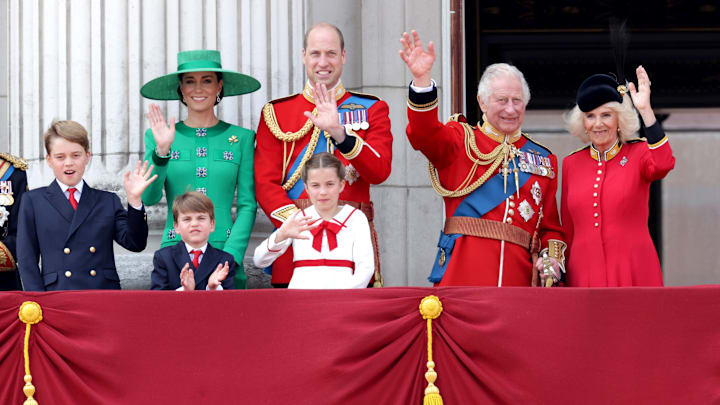For most of my life, the question of royal succession has been an abstract one. Queen Elizabeth II was the longest-reigning British monarch and the second-longest-reigning monarch of any sovereign nation. It felt as if her reign would last forever, and that we'd never have to consider the question of what would happen if she died.
Of course that came to an end in 2022 when Queen Elizabeth II passed away at the age of 96. Her son, Charles, of course then ascended to the throne, becoming King Charles III.
A consequence of the Queen's extremely long reign is that Charles was not a young man when he became king. For Charles to match his mother's longevity on the throne, he'd have to live to the age of 143! Charles will definitely have a shorter reign than his mother, and with the news that Charles has been diagnosed with cancer, we may be considering the question of royal succession again sooner than we think.
Who will be the next monarch in the United Kingdom?
The question of what will happen when King Charles dies is a simple one. His son William, who now carries the honorific title Prince of Wales, will become King William V (unless he chooses a regnal name, but only three British monarchs have done that).
Most people would have known, or at least assumed this was the case, as it's common for the King's eldest son to replace him. But what if William were to die too? Next in line are William's three children: George (second in line), Charlotte (third in line), and Louis (fourth in line). After William's clan, there's Charles' other son, Harry (fifth in line), then his two children: Archie (sixth in line) and Lilibet (seventh in line).
Of course, for the two-year old Lilibet to become queen, William, George, Charlotte, Louis, Harry, and Archie would have to all die in quick succession. The most likely sequence of succession is George succeeding William after William dies in old age, and George's eldest succeeding him after another long reign.
What are the rules for British royal succession?
Thankfully, the path of royal succession is a relatively simple matter for the current royal family. However, that has not always been the case. There are many complicated rules that have to be met for a person to become the next monarch, and the fact that the line of succession is currently simple is mostly just fortunate accident of birth.
One key factor that makes the line of succession following Charles rather simple is the fact that he only had two sons. Had his eldest been a daughter, her younger brother would have been the next king. Until recently, it was the monarch's eldest son who was next in line. England only had queens when there were no other male heirs. If Queen Elizabeth II had had a younger brother, he would've become king ahead of her (however, she was ahead of her male cousins).
This system of "male-preference primogeniture," or "cognatic primogeniture" was abandoned in 2015, and the rule change was backdated to 2011, meaning the line of succession follows birth order, regardless of sex. Because William's eldest, George, is a male, this is unlikely to be an issue. However, if something were to happen to George, his younger sister Charlotte would be next in line, whereas previously her younger brother Louis would come before her in the line-up.
There is one other possible complication of note. The British monarch is also the head of the Church of England and the Church of Scotland. Although the Anglican Church is relatively similar to the Catholic Church, it is distinct (thanks to Henry VIII). Because of that, the British throne cannot be held by a Catholic.
If the next person in line for the throne was Catholic, they would have to either formally convert or relinquish their claim to the throne.
What about the monarch's partner?
While the direct monarch is a relatively simple matter, there are also plenty of questions to be asked about their partner. Fairy tales have taught us that the king's wife is the queen; a kingdom is ruled by a king and a queen. Is Charles' wife, Camilla, the queen? And will William's wife Kate be the next queen? The answer to this involves some very confusing semantics, so bear with me.
No, Camilla is not the Queen, and Kate will not be the queen. But Camilla is a queen, and Kate will be a queen. Camilla's title is Queen Camilla. This is because "King" and "Queen" are not equivalent titles. "King" is a simple word that only has one meaning; if the sovereign head of state is a male, then he is king. But "queen" can mean many things; the queen is the sovereign head of state who is female, but "queen" can mean the wife of a king.
This can also be defined by the terms "queen regnant" (ruling queen) and "queen consort" (wife of the king). It's why the husband of a queen is often not considered to be the king (as that would have him outrank his wife). Instead, like Queen Elizabeth's husband Phillip, the partner of a female ruler is a prince consort.
So, after King Charles' reign ends, William will become the King, and his wife will become a queen, but not the queen.
You know that thing where you repeat a word over and over again, and it no longer sounds like a word...
As of 2011, there were 4,973 people in line for the British throne. The very last of them is Karin Vogel, a physical therapist living in Rostock, Germany. Ms Vogel would become the Queen of England if 4,972 people, including King Charles III, were to all simultaneously disappear off the face of the earth.
Got questions about history, trivia, or anything else? Send an email to askeverest@fansided.comand we might answer here on the site!
